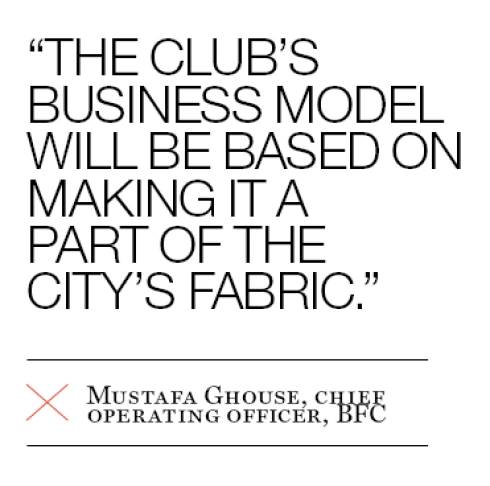THE PLACE could have been Manchester—only it was the 3 Wise Monkeys pub in Khar, a suburb in Mumbai, where I was watching the UEFA Champions League quarter-final between Manchester United and Bayern Munich amid 200 well-heeled twentysomethings. Well before the match started, the crowd started reciting the entire repertoire of United chants. United lost. Tears were shed. But the chants, and the beers, continued.
That kind of loyalty—rare for Indian football clubs except the game’s old bastions in West Bengal or Goa—is what the year-old Bengaluru FC (BFC) is trying to conjure. Owned by the $11 billion (Rs 66,924 crore) JSW Group, the club started off well: Last year, its debut season, it won the country’s premier club competition I-League, beating Kolkata’s 94-year-old East Bengal Football Club (funded by United Breweries under the Kingfisher brand) by four points. In Bangalore, where FC Barcelona or Juventus colours are a common sight, BFC jerseys are getting increasingly cool.
Though these are early days, the club has won admirers in a country that is perennially at the bottom of the FIFA rankings (currently No. 158), despite a large following for the sport. One of them is Issac John, marketing head of apparel and accessories maker Puma India, which signed up as BFC’s kit sponsor in July. “We had a meeting of minds within five minutes of our talks,” says John. “One of the first things they said was that they wanted kits for their under-17 and under-15 teams too. No other Indian club ever asked for that.” In a first for Indian football, Puma will make BFC’s kits for the next season using the same technology and fabric as it does for the English giant Arsenal. (Puma started supplying kits to Arsenal this season in a £150 million, or Rs 1,490 crore, deal.)

CRICKET’S STRANGLEHOLD in India is a cliché, but football, particularly European club football, has also unearthed a lucrative market among the urban youth over the last decade or so, thanks to Star Sports and its previous avatar ESPN Star. A report in Financial Times says international football now has 131 million viewers in India; the majority of them have unwavering loyalties, like Khar’s United brigade.
BFC’s chief operating officer Mustafa Ghouse says the club’s business model will be shaped by European clubs’ legacy of becoming “a part of the city’s fabric”. While it does have conventional activation channels like children’s football camps and corporate tournaments, the club is betting on social media as the real force multiplier. It encourages its 56,000-odd Facebook fans to interact with players at the open training sessions every morning at its home base, the Bangalore Football Stadium. That’s clever use of the medium, because the stadium is open to fans through the week anyway. It’s also the rare Indian football club with an official YouTube channel.
Like many European clubs, BFC has signed up a microbrewery—Arbor Brewing Company, popularly known as ABC—as the official watering hole. It also has relationships with Café Coffee Day and Radio City. Ghouse says the club’s revenues will come from a mix of ticket sales, merchandising, and sponsorships, though he won’t give out numbers.
THE JSW GROUP isn’t cutting corners. The home stadium has been transformed from its dilapidated state just a few years ago to a shiny new blue-red-and-white structure. “Oh the blues go marching in,” reads a large banner.
The stadium, which has a capacity of 15,000, is likely to be torn down soon to make way for a bigger one for the FIFA U-17 World Cup 2017, which India will host. The expected cost: between Rs 150 crore and Rs 200 crore. It is part of the JSW Group’s commitment to the All India Football Federation, which gave BFC direct entry into the I-League. While the new stadium is being built, the team will play in the 39,000-capacity Sree Kanteerava Stadium.
The larger stadium will be a test of BFC’s ability to sustain the momentum and attract more fans. It also remains to be seen how the I-League itself copes in the era of the Indian Super League—the IPL-style juggernaut with Hero and IMG-Reliance’s backing—starting later this month.
So far, Indian club football has seen several false starts despite promising noises by corporate benefactors. Mumbai’s Mahindra United FC and Phagwara’s JCT FC, both storied institutions that won the I-League in their heyday, were disbanded when their owners lost interest. Ghouse, however, insists they are in it for the long term. “A lot of thought has gone into choosing the city, the colours, and the crest, and making sure we got our direction right. We want to be a major force in Asia in the next few years.”










Leave a Comment
Your email address will not be published. Required field are marked*